Within a short span of time, it’s easy to reach some of Florida’s most historic and vibrant communities. In this ongoing series, we highlight some great destinations that will make you want to hit the road. As travelers embark on new adventures, we encourage taking appropriate health precautions.
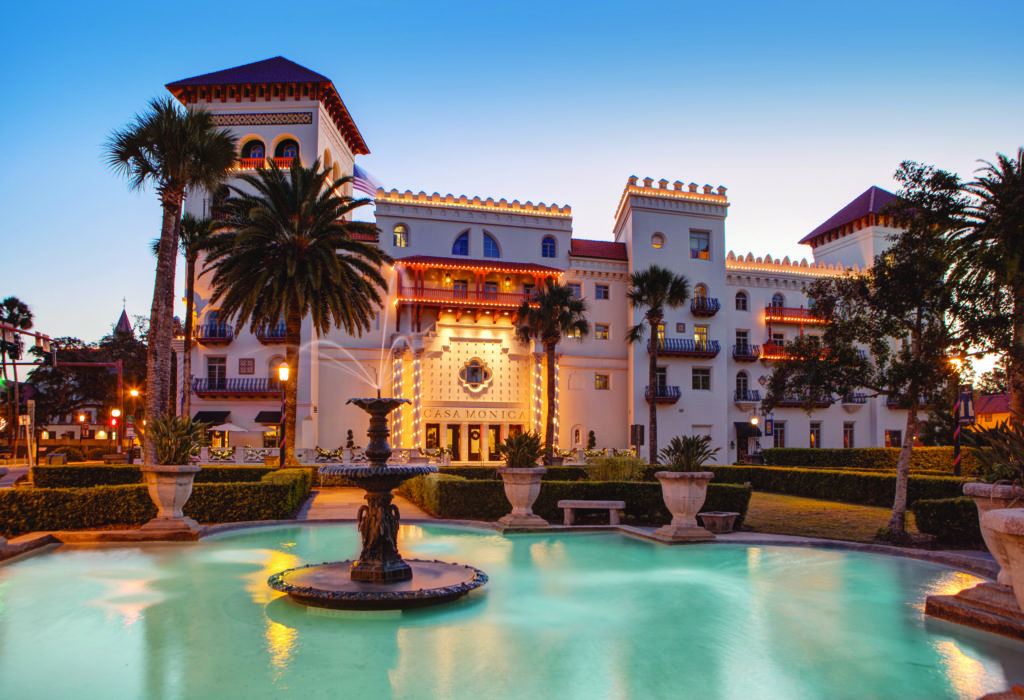
Like many storied Florida towns, St. Augustine is rich in history and natural beauty. It is the oldest continuously populated city in North America, founded as a Spanish colonial outpost in 1565, some 55 years before the Pilgrims stepped onto Plymouth Rock and 42 years before the historic Jamestown settlement was established.
This ancient city therefore feels vaguely European, with an air of mystery and the lure of things waiting to be discovered. Some of that is due to the layers of its 456-year history and its beautifully ornate architectural masterpieces. But there is also the draw of the new and notable culinary and cultural influences.
It’s also a mecca for water lovers, with 43 pristine miles of white, sandy beaches stretching from Vilano Beach north of the city to Crescent Beach in the south, with dozens of public access points along the coastline. The area’s many marinas make boating convenient by sea, river or Intracoastal Waterway. Fishing, diving, surfing, stand-up paddleboarding, parasailing and volleyball offer a little something for everyone.
But there’s quality beyond all that which is hard to explain about St. Augustine—the spell it casts over visitors that is purely about a way of life and the pursuit of pleasure.
It invites you to let the world fall away as you stroll the ancient cobblestone avenues at a languid pace, drinking in the sights both spectacular and mundane, indulging in handcrafted cuisine and indulgent sweets in ivy-framed courtyards that shade you with their dappled light, dipping in and out of quirky shops in search of nothing in particular and allowing the warm breeze to push past you like spirits from another time. It’s a place that makes you want to linger a little longer, perhaps prematurely regretting your impending departure, but certain that you will soon return.
Old World
With so much history, no matter where you venture in St. Augustine you’re sure to encounter an abundance of landmarks. Among the top-notch museums and attractions are the inevitable tourist traps, so it’s good to do a little research before you go.
If you want to get a head start on determining just what historical sites you want to visit and which to skip, there’s plenty of great info online and some helpful books, with, perhaps, the most popular being Walking St. Augustine: An Illustrated Guide and Pocket History to America’s Oldest City by St. Augustine resident and architectural historian Elsbeth “Buff” Gordon.
 One reviewer had this to say about the guide: “Gaze at the buildings and read the accounts of the people who walked the same streets more than 450 years ago; you will be transformed into a time traveler.”
One reviewer had this to say about the guide: “Gaze at the buildings and read the accounts of the people who walked the same streets more than 450 years ago; you will be transformed into a time traveler.”
A coffee table book was created to commemorate the city’s 450th anniversary, St. Augustine: America’s First City, A Story of Unbroken History & Enduring Spirit, by Dr. J. Michael Francis. It is an interesting and informative read, illustrated with present-day photos by local photographer Glenn Hastings.
And while the city’s Spanish roots are easy to see, St. Augustine is also significant in terms of Black American heritage, not only because it is the place where slavery started in America but also as it was the site of the nation’s first settlement of free slaves. Over its long history, the city has played host to a rich and thriving Black community and a major role in the development of Black culture.
When Spanish conquistador Pedro Menendez landed and founded the city’s first settlement in 1565, his crew included three Black members. He recorded that his arrival had been preceded by several free Africans who were part of a nearby French settlement.
Fort Mose, the first free Black settlement in the U.S., was established in 1738 and was comprised of a community of ex-slaves. It was the headquarters of the first Black armed soldiers.
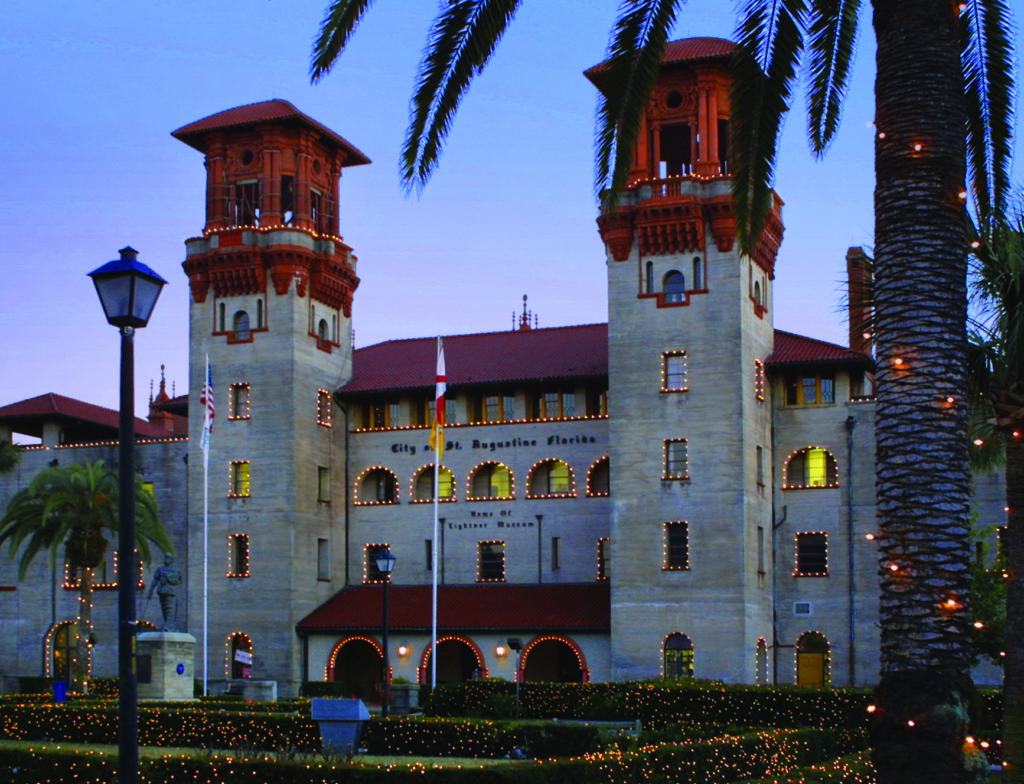 The Lincolnville Museum & Cultural Center showcases exhibits that trace the history of the runaway slaves, the difficult times when restrictive laws suppressed basic rights, the formation of a thriving Black business district and the period when Black and white activists joined together to fight the Ku Klux Klan, as well as Dr. Martin Luther King Jr.’s visit to lead peaceful protests with the leaders of the Black community as part of the Civil Rights movement that contributed to the passage of the Civil Rights Act of 1964.
The Lincolnville Museum & Cultural Center showcases exhibits that trace the history of the runaway slaves, the difficult times when restrictive laws suppressed basic rights, the formation of a thriving Black business district and the period when Black and white activists joined together to fight the Ku Klux Klan, as well as Dr. Martin Luther King Jr.’s visit to lead peaceful protests with the leaders of the Black community as part of the Civil Rights movement that contributed to the passage of the Civil Rights Act of 1964.
In 2011, the city placed a monument in the city’s central plaza to honor those civil rights heroes, known as the St. Augustine Foot Soldiers.
For more information and itineraries related to St. Augustine’s Black heritage, visit historiccoastculture.com/travel-itineraries/itinerary-african-american-heritage
New Horizons
Over the past decade, St. Augustine has experienced tremendous growth in the areas of art, culture and cuisine and locals continue to evolve it as a compelling modern destination.
Stephen Hutson, the owner of the popular Catch 27 restaurant, the name of which is a nod to the fact that the eatery features only fresh, locally sourced seafood and that Florida was the 27th state to join the union, believes what makes St. Augustine so special is the genuine love the residents and business owners feel for this place.
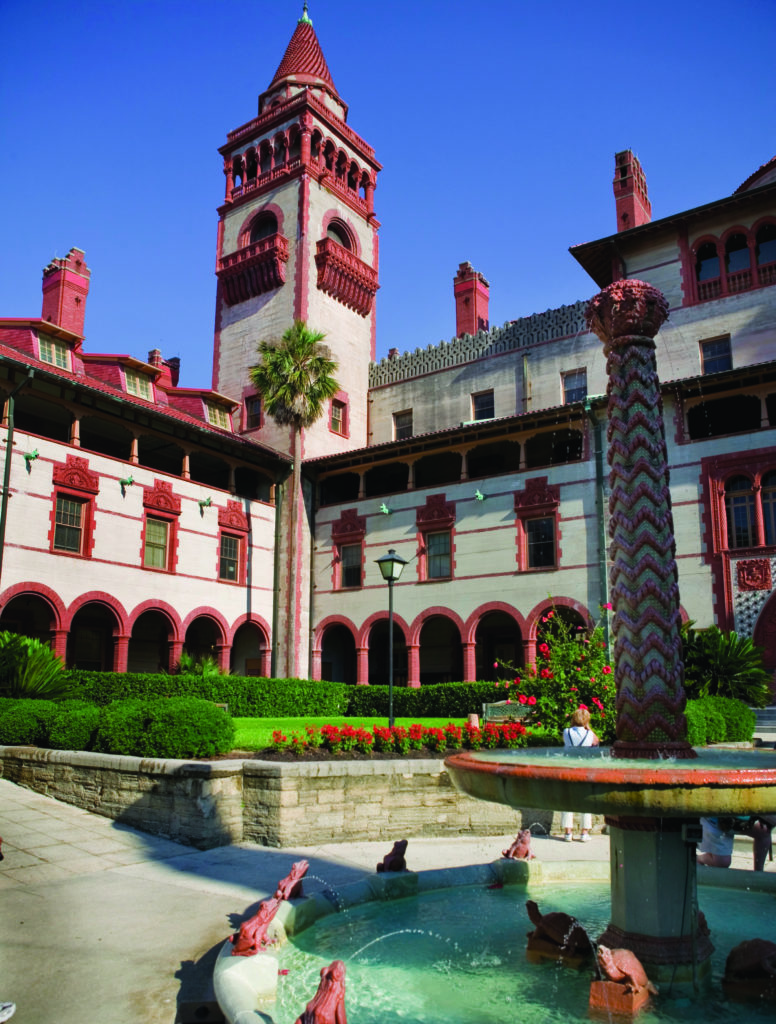 Hutson fell under the city’s spell during many family vacations to the area during his childhood. He later chose to attend Flagler College and put himself through school by working in local restaurants. That was where his passion for the industry began. After receiving his degree in business, he knew he wanted to make a life in St. Augustine.
Hutson fell under the city’s spell during many family vacations to the area during his childhood. He later chose to attend Flagler College and put himself through school by working in local restaurants. That was where his passion for the industry began. After receiving his degree in business, he knew he wanted to make a life in St. Augustine.
“What makes St. Augustine so special is how passionate the people who live here and do business here are about the community,” he offers. “I love being a part of that.”
Another star among the new guard is Maryrose LaCavera, who opened a location of her family’s business, Peace Pie, there.
“St. Augustine has a similarity to Charleston and Cape May, New Jersey, where our flagship is,” explains LaCavera. “It’s eclectic. It’s very historic, but then there’s all this new food, new art and new ideas coming in. I feel that St. Augustine is an up-and-coming place that has really shown its worth by how we entertain and feed [people] and all the exciting things to do here. I’m an artist, so I love being located on Aviles Street in the art district, which is being renovated and is becoming an attraction with all the museums and the art galleries. It’s a really cool spot and it’s great to be part of that growth.”
The Lap of Luxury
If St. Augustine has a centerpiece, it would have to be the trio of palace-like structures at the heart of the Historic District. They are situated just steps apart at the intersection of Cordova and King Streets, with a manicured plaza at their center.
These architectural grande dames—the Casa Monica Hotel, The Lightner Museum and Flagler College—are vestiges of an age of elegance and the period that first established St. Augustine as a world-class destination for travelers from around the world. At one time, all three were opulent hotels that served as a playground for the rich and famous, earning the city the nickname “Newport of the South.”
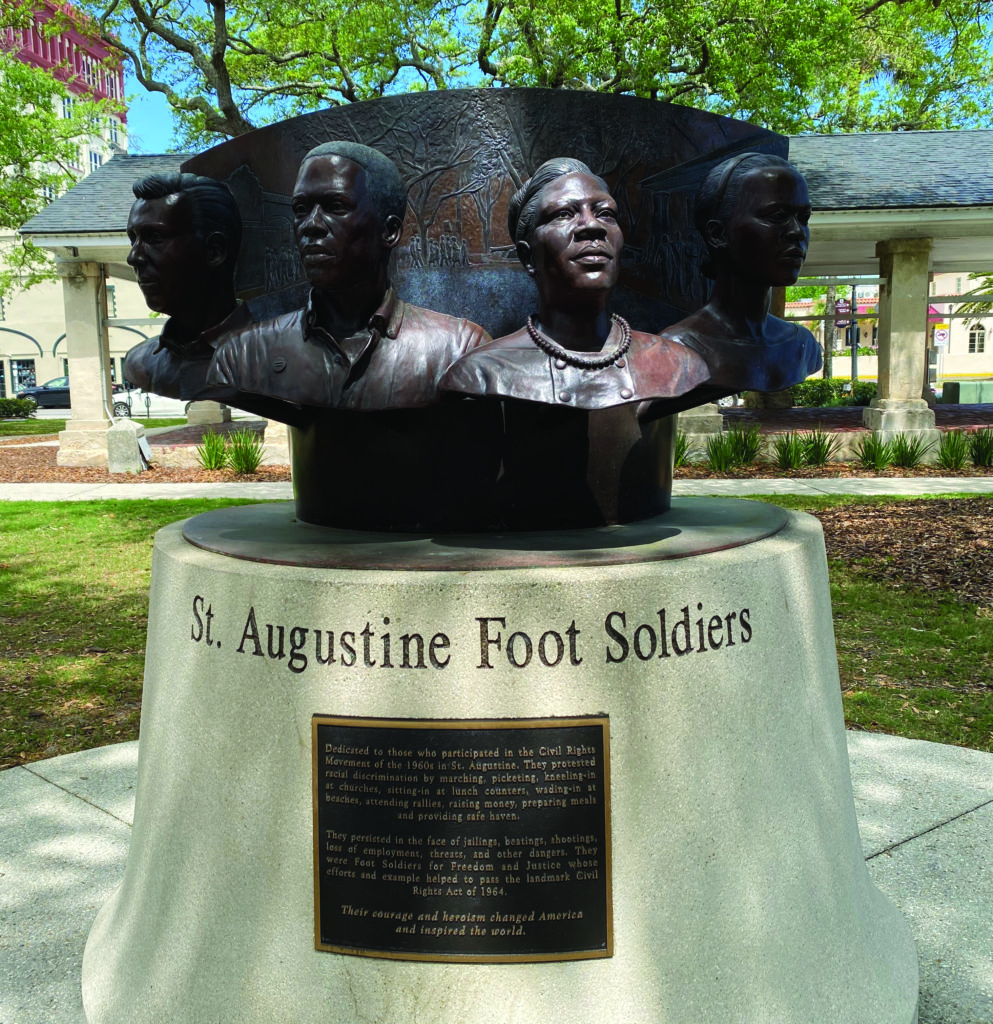 Wealthy oil entrepreneur Henry Flagler first visited during the winter of 1882-1883. While he found St. Augustine charming, he felt it lacked top-notch accommodations. Foreseeing the city’s potential to attract the wealthy elite, he returned in 1885 and began construction of the Spanish Renaissance style, 540-room, luxury Ponce de Leon Hotel. It was the first hotel of its kind and one of the first buildings in the country wired for electricity by Flagler’s friend Thomas Edison. The building and grounds are now part of Flagler College, a small liberal arts school. The college normally offers daily architectural tours (on hold until May), including the magnificent dining room that features 79 exquisite Tiffany stained glass windows.
Wealthy oil entrepreneur Henry Flagler first visited during the winter of 1882-1883. While he found St. Augustine charming, he felt it lacked top-notch accommodations. Foreseeing the city’s potential to attract the wealthy elite, he returned in 1885 and began construction of the Spanish Renaissance style, 540-room, luxury Ponce de Leon Hotel. It was the first hotel of its kind and one of the first buildings in the country wired for electricity by Flagler’s friend Thomas Edison. The building and grounds are now part of Flagler College, a small liberal arts school. The college normally offers daily architectural tours (on hold until May), including the magnificent dining room that features 79 exquisite Tiffany stained glass windows.
In 1887, Flagler constructed the striking Spanish Renaissance Revival style Hotel Alcazar, which featured a three-story ballroom, gymnasium, steam room, sulfur baths, massage parlor and the world’s largest indoor swimming pool. In 1947, the then vacant building was purchased by wealthy publisher Otto C. Lightner to house his quirky collection of mostly gilded-age antiquities gathered from the estates of America’s wealthy ruling class during the Victorian era. While the exhibits at The Lightner are a menagerie of odd gems, touring the building is well worth the price of admission. The museum also houses Cafe Alcazar, an elegant eatery in what was once the indoor swimming pool and which consistently draws raves for the food and service.
Only the Casa Monica, built in 1888 by notable Victorian architecture enthusiast and social reformer Franklin W. Smith, and later purchased by Flagler, who renamed it The Cordova, is presently a hotel. The elegant Moorish Revival-style Casa Monica, one of the Kessler Collection of luxury properties, which is part of the Marriott’s Autograph Collection of unique boutique hotels, is one of the oldest hotels in the United States. After housing various other entities, it was lovingly restored and reopened by CEO and founder Richard Kessler in December 1999, once again bearing the name Casa Monica Hotel. It was later renamed the Casa Monica Resort & Spa.
The reopening of the Casa Monica played an essential role in stimulating the revitalization of the Historic District and bringing upscale tourism back to the area nearly 30 years ago, when the district was facing significant challenges. The hotel is the only one in St. Augustine to be given AAA’s Four-Diamond award.
It is a wonderfully unique property with all the hallmarks Kessler Collection properties are known for, including exceptional hospitality, stylish accommodations, gourmet cuisine, great wine and spirits, engaging entertainment and a curated collection of fine art. The lobby has been artfully adorned to conjure the feel of the original Moroccan influenced interiors, featuring intricate hand-painted beams with ornate gold leaf elements, exotic chandeliers, vintage furnishings and an Italian-tiled fountain. The guest rooms have the same opulent old-world charm, with plenty of thoughtful modern amenities.
The hotel also has a stylish inner courtyard pool deck, in-house spa, gym and valet parking.
The Casa Monica is in the perfect location from which to explore all of downtown, including many of the most popular restaurants and attractions.
To Do’s for St. Augustine
How do I get around?
St Augustine is a very walkable city, but you’ll need a car to access the beaches and some attractions. You can also hop on the Old Town Trolley tour, a convenient way to see the city, with 23 stops and more than 100 attractions. Drivers provide continuous commentary to acquaint visitors with the city’s history.
Where to eat and drink?
Preserved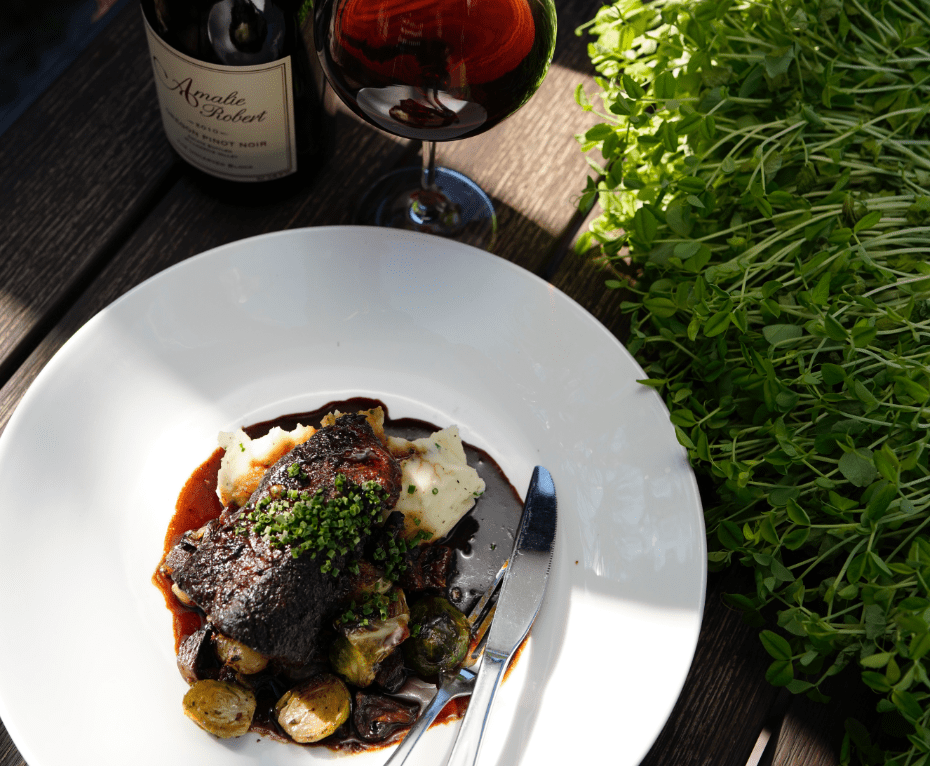 Housed in a charming old Victorian home, James Beard-nominated chef Brian Whittington serves up seasonal, ingredient-driven, locally sourced, modern Southern cuisine with French influences. From the much talked about short ribs to the smoked chicken hash, the food is pleasingly complex and bursting with flavor. Whittington says the menu pays homage to the history of the historic Black Lincolnville Neighborhood in which it is located. Reservations are highly suggested. striverestaurant.com
Housed in a charming old Victorian home, James Beard-nominated chef Brian Whittington serves up seasonal, ingredient-driven, locally sourced, modern Southern cuisine with French influences. From the much talked about short ribs to the smoked chicken hash, the food is pleasingly complex and bursting with flavor. Whittington says the menu pays homage to the history of the historic Black Lincolnville Neighborhood in which it is located. Reservations are highly suggested. striverestaurant.com
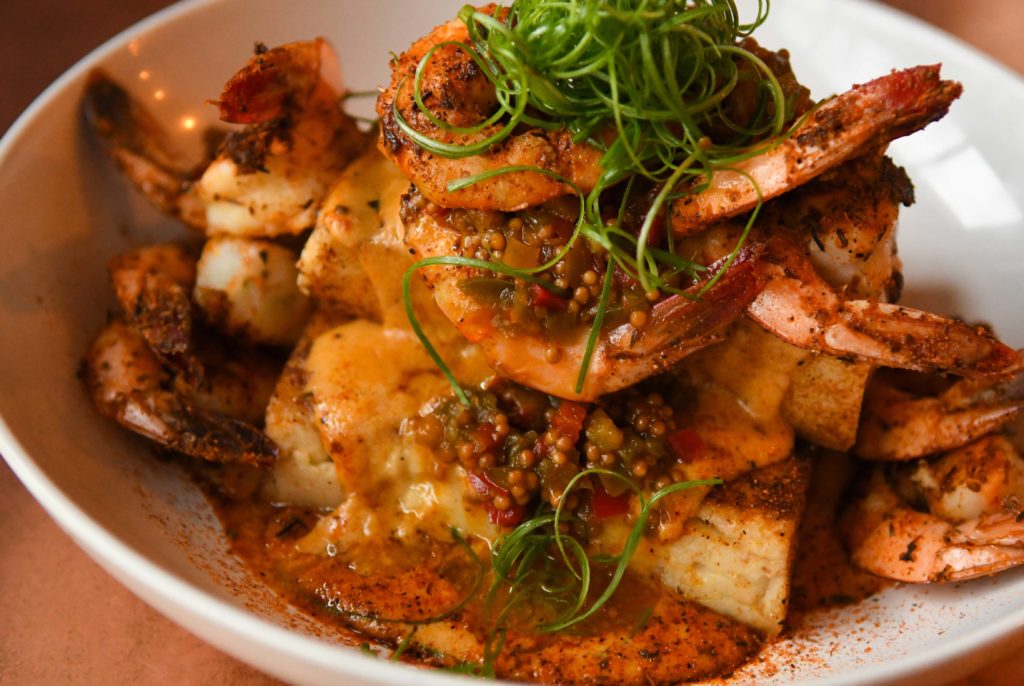 Catch 27
Catch 27
This casual fine-dining seafood restaurant draws rave reviews for its dedication to serving only locally caught Florida seafood (delivered fresh every day), cooked from scratch with locally farmed produce and seasonal ingredients. The menu features classic dishes in fun and inventive ways. The Minorcan Seafood Chowder is a consistent favorite among guests. catchtwentyseven.com
Forgotten Tonic (formerly Cellar 6)
This intimate neighborhood cafe on Aviles Street offers a small but interesting menu, craft cocktails, an extensive wine list and friendly service in a causal atmosphere. It opens at noon, with a limited menu. The full menu is available after 3pm. Reservations are strongly suggested on Friday and Saturday nights. forgottentonic.com
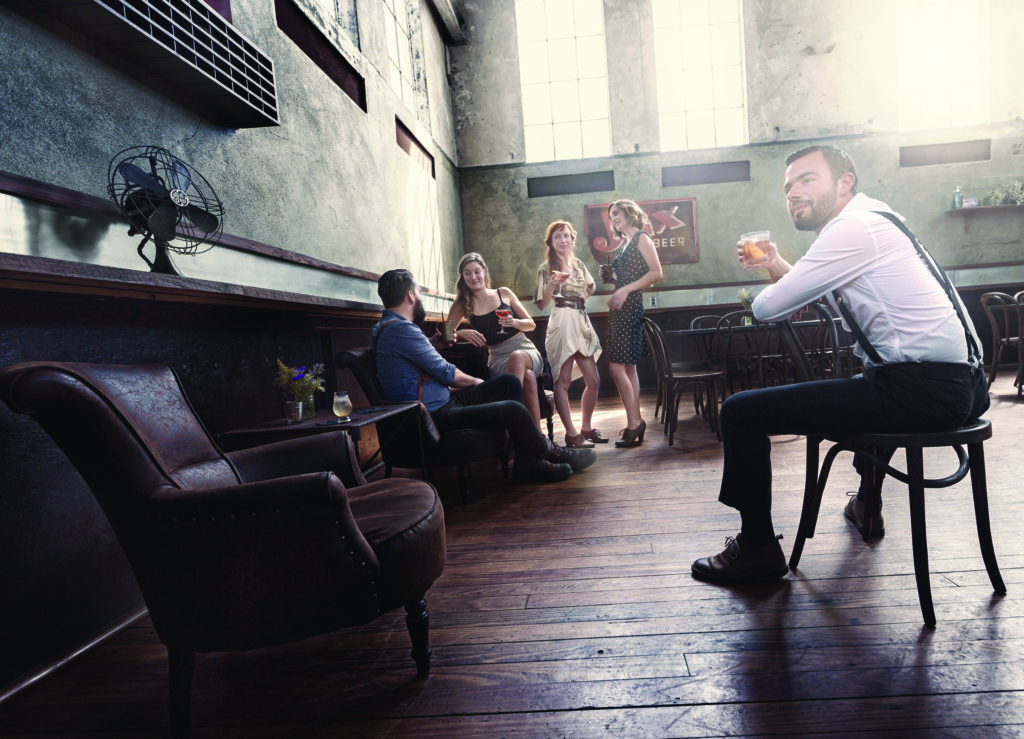 Ice Plant
Ice Plant
This vintage-themed bar and restaurant occupies half of the historic building that houses the St. Augustine Distillery. Built in 1905 as part of St. Augustine’s first power plant and expanded around 1927 to house a commercial block ice complex, the historic building fell into disrepair after it was closed in the 1950s and was gutted in the 1990s. With a lot of buzz, the building was remodeled and the Ice Plant opened in 2013, serving up an industrial chic-meets-Prohibition style bar with exceptional craft cocktails featuring local ingredients and a farm-to-table restaurant serving grass-fed beef and burgers, local seafood and vegetarian options. With a nod to St. Augustine’s history, the bar serves up such popular concoctions as the Flagler Billionaire. They are open for lunch and dinner. iceplantbar.com
Columbia Restaurant
The roots of this much-loved, family-owned restaurant run deep. Founded in 1905 by Cuban immigrant Casimiro Hernandez Sr., the original Columbia Restaurant, in Tampa’s Ybor City, is Florida’s oldest restaurant.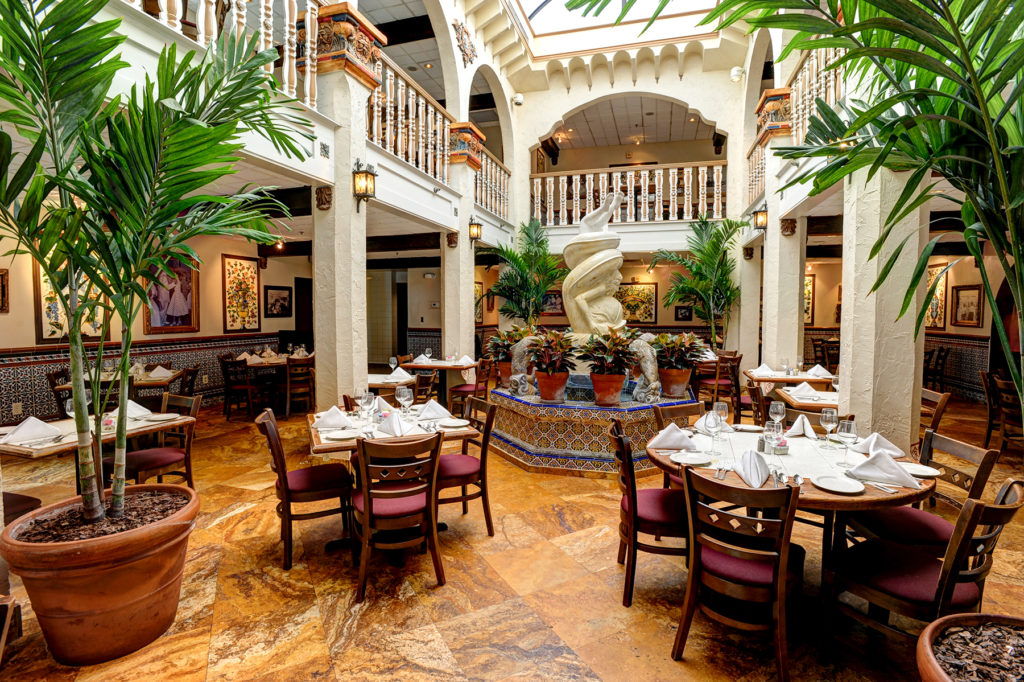 It began as a small 60-seat corner cafe known for its Cuban coffee and authentic Cuban sandwiches, frequented by the local cigar workers. Over time the family opened locations throughout Central Florida, creating a dedicated following. In 1983 they opened their St. Augustine restaurant in the Historic District, serving lunch and dinner in dining rooms adorned with hundreds of hand-painted tiles and Spanish-style fountains. Centuries-old family recipes like Paella a la Valenciana, Red Snapper Alicante, Roast Pork a la Cubana and Filet Mignon Chacho are still among the dishes most loved by visitors. columbiarestaurant.com
It began as a small 60-seat corner cafe known for its Cuban coffee and authentic Cuban sandwiches, frequented by the local cigar workers. Over time the family opened locations throughout Central Florida, creating a dedicated following. In 1983 they opened their St. Augustine restaurant in the Historic District, serving lunch and dinner in dining rooms adorned with hundreds of hand-painted tiles and Spanish-style fountains. Centuries-old family recipes like Paella a la Valenciana, Red Snapper Alicante, Roast Pork a la Cubana and Filet Mignon Chacho are still among the dishes most loved by visitors. columbiarestaurant.com
Peace Pie
This specialty ice cream sandwich shop offers a unique spin on the ice cream sandwich, packing a heaping helping of your favorite pie filling or decadent dessert between two of their delicious homemade, crunchy shortbread cookies. 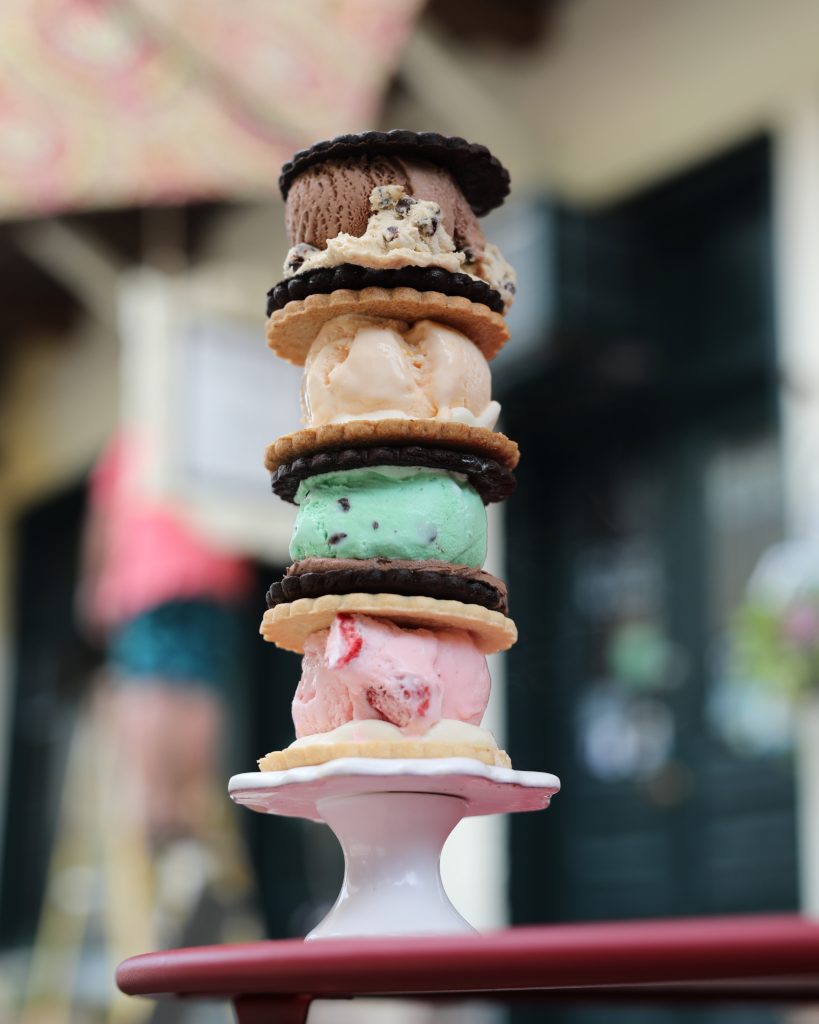 The salted caramel brownie is their best seller. Located downtown on Aviles Street, it’s the perfect spot to cool off with a sweet treat and stroll through the historic district. They open in the afternoon and serve into the evening. Due to the pandemic, they only offer walk-up service at the moment, with limited outdoor seating. peacepieworld.com
The salted caramel brownie is their best seller. Located downtown on Aviles Street, it’s the perfect spot to cool off with a sweet treat and stroll through the historic district. They open in the afternoon and serve into the evening. Due to the pandemic, they only offer walk-up service at the moment, with limited outdoor seating. peacepieworld.com
Kookaburra Coffee
This Aussie-American coffee bar and pie shop was such a hit with locals when it opened on Cathedral Place in 2012 that it has grown to have several locations around St. Augustine, serving specialty coffee, espresso and Australian-inspired savory breakfast and lunch mini pies. thekookaburracoffee.com
Where do I stay?
While we recommend the Casa Monica for the location and overall experience, you’ll find an array of wonderful B&Bs, stylish hotels and various types of accommodations. Other properties we’ve heard great things about include the more contemporary Marker 8 Hotel & Marina and the historic Bayfront Marin House.
What else should I do while I’m there?
Castillo de San Marcos
This Spanish-built fort on Mantanzas Bay was built in 1672 and is one of the most architecturally significant structures in the city. It also happens to be the oldest masonry fort in the country and was constructed using native coquina stones—which absorbed and deflected projectiles and gave the Spanish an advantage over enemy invaders. You’ll enjoy incredible views of the city and waterfront from the top of the fort.
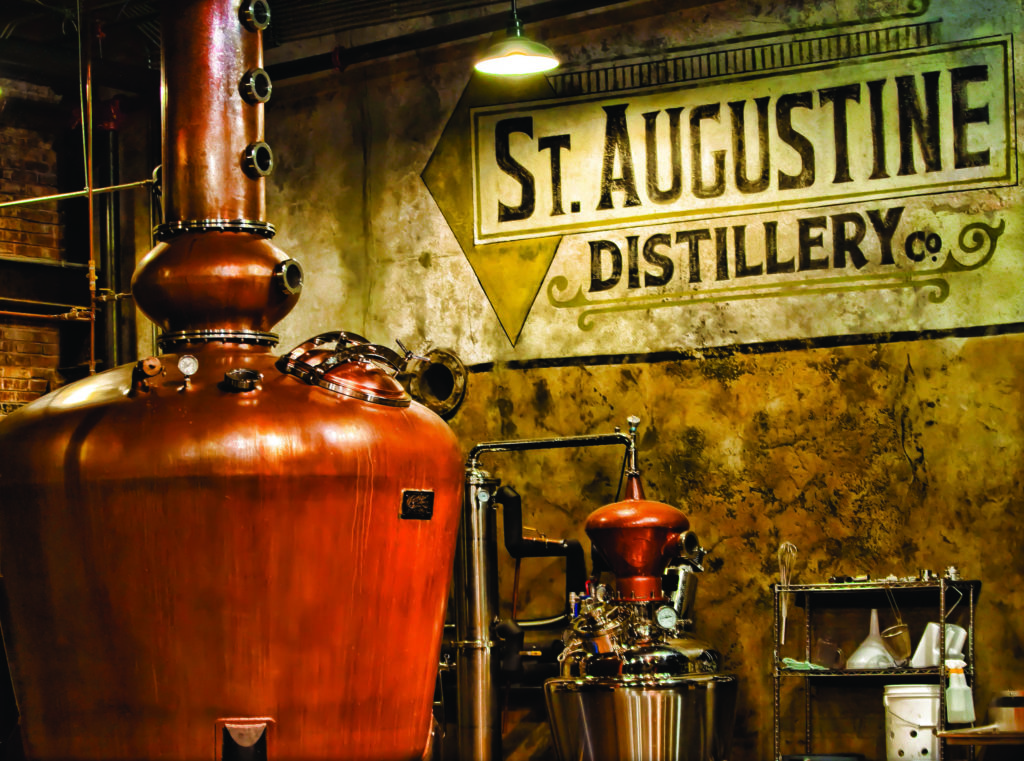 Fountain of Youth
Fountain of Youth
In what we believe is a case of more fable than actual fact, Ponce de Léon’s Fountain of Youth Archaeological Park may not possess any magical water but there’s plenty of nature and history at this lush 15-acre park, with majestic peacocks and open-air exhibits featuring Timucua civilization and the Spanish conquests. And as long as you’re there…it couldn’t hurt to take a drink!
St. Augustine Distillery
This popular family-owned and operated artisanal spirits distillery, committed to making world-class spirits using local and regional agricultural products, offers free, self-guided tours and tastings during which you can watch them craft and bottle their award-winning rum, bourbon whiskey, gin and vodka by hand in the same turn of the century industrial building that houses the Ice Plant bar and restaurant. If you time your tour right, you can shop their store and then head upstairs for a cocktail.
San Sebastian Winery
San Sebastian is ranked as one of Florida’s premium wineries and remains a pioneer in the development of table, sparkling and dessert wines from hybrid and muscadine grapes. Visitors rave about the fun and free tours and multiple tasting stations, and many buy several bottles to take home. It’s also worth visiting the open-air Cellar Upstairs Wine Bar & Restaurant, where you can enjoy the views, yummy tapas, live music…Oh, and more wine.
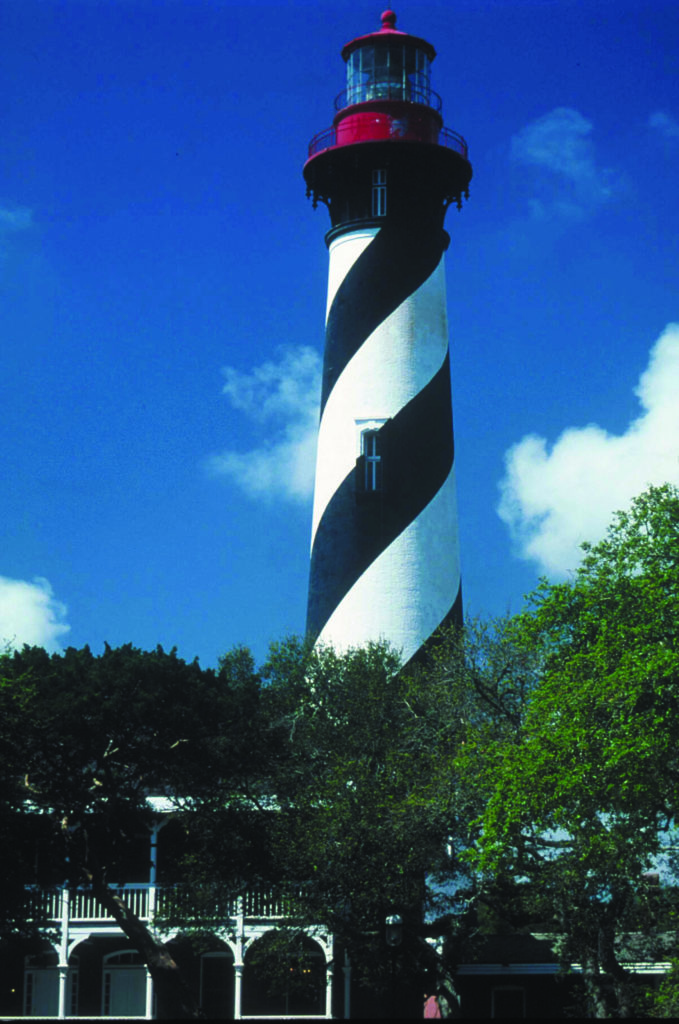 St. Augustine Lighthouse & Maritime Museum
St. Augustine Lighthouse & Maritime Museum
This iconic lighthouse, completed in 1874, offers amazing panoramic views—once you climb all 219 steps of the 165-foot tower, that is. The museum has some fascinating displays that include maritime artifacts and some recent archaeological discoveries.
St. Augustine Alligator Farm Zoological Park
Opened in 1893, this is among the country’s first zoos and is focused on teaching and wildlife conservation. There’s fun to be had viewing exhibits of exotic birds and monkeys, and visitors marvel at how up close and personal they get to the humongous alligators and crocodiles in a safe environment. The shaded park features raised wooden boardwalks, but you can also zip line through the trees or book a behind-the-scenes tour.
When to visit
February: The St. Augustine Spanish Wine Festival celebrates Pedro Menendez’s birthday through a series of events that feature Spanish wine, cuisine and culture. Proceeds from the events benefit local charities.
September: The Sing Out Loud Festival is the largest free music festival in Florida and features big name headliners, as well as local songwriters and talent in free concerts at multiple venues throughout the month.
 From the weekend before Thanksgiving to the end of January: The annual Nights of Lights celebration is a dazzling display in which almost the entire city of St. Augustine takes on a mantle of more than 3 million twinkling white lights.
From the weekend before Thanksgiving to the end of January: The annual Nights of Lights celebration is a dazzling display in which almost the entire city of St. Augustine takes on a mantle of more than 3 million twinkling white lights.
To learn more, log on to floridashistoriccoast.com






